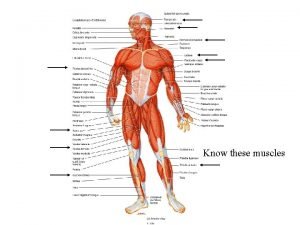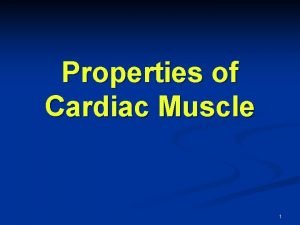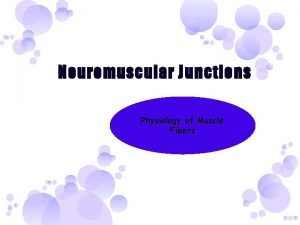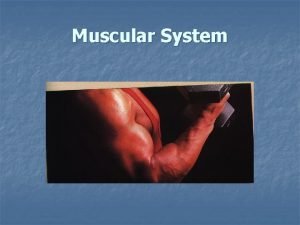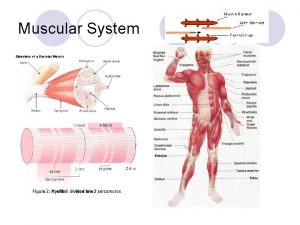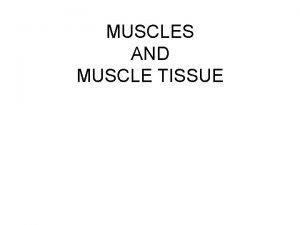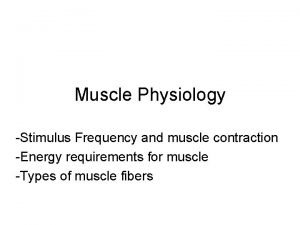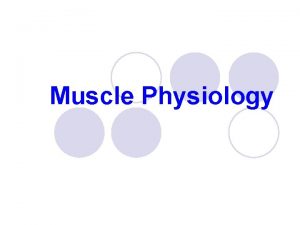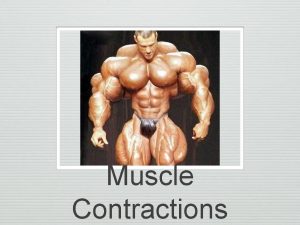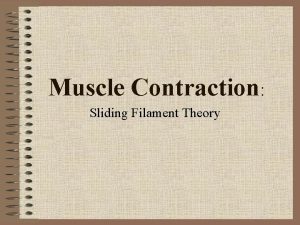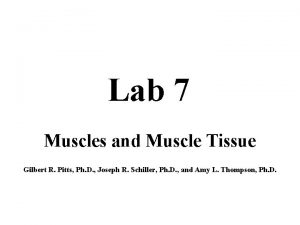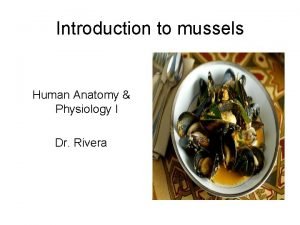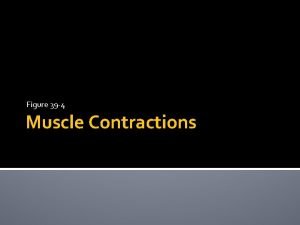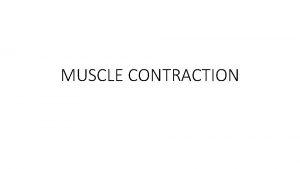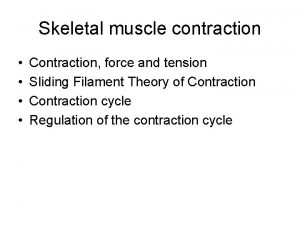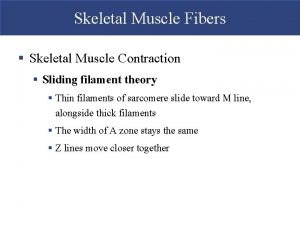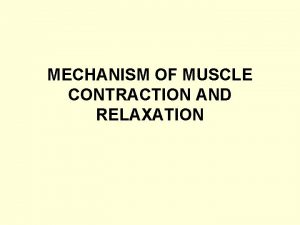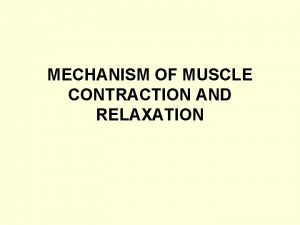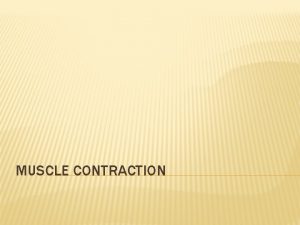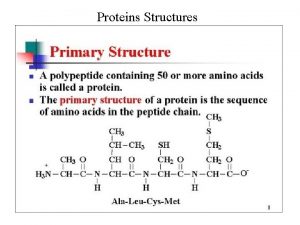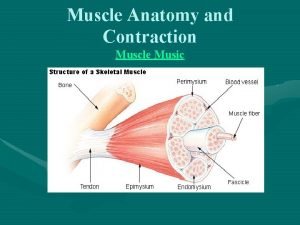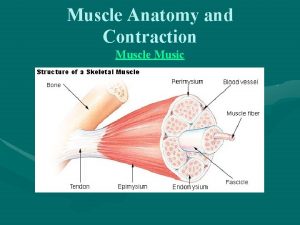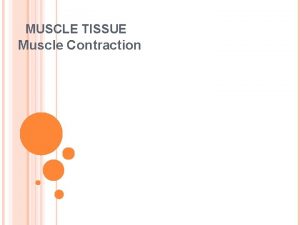Muscle Contraction Muscle structure Proteins in muscle Sliding













- Slides: 13

Muscle Contraction Muscle structure Proteins in muscle Sliding filament theory of contraction

Muscle Structure

Muscle Structure Muscle Each level of organisation consists of vast quantities of the level immediately below it. Muscle bundle Separating each component is a thin substance called fascia to ensure smooth contraction of each component in the correct direction. Muscle fibre

Going deeper

Simplest level of contraction • Muscle fibres – multinuclear cells with large quantities of mitochondria. • Muscle fibres consist of bundles of myofibrils, which are arranged into smaller myofilaments, which give muscle its stripy appearance. • Sarcomere – repeating patterns of myofibrils – Light filaments (Actin) – Dark Filaments (Myosin)

Muscle Checkpoint • Arrange the following terms in order from the simplest to most complex muscle structure Muscle bundle Myofibril Muscle fibre Sarcomere

Sarcomere Structure

Say What You See! Relaxed Sarcomere Contracted Sarcomere

Sliding Filament Theory • Proposed by Hugh Huxley and Jean Hanson in 1954. • Protein filaments slide past one another rather than previous theory that filaments decreased in length. • Subsequent experiments revealed the mechanism of contraction.

The Cross Bridge Cycle

Muscle Contraction • http: //www. youtube. com/watch? v=83 y. N o. EJy. P 6 g&feature=related

Maintaining ATP supply 1. Aerobic respiration in muscle cells. Needs a supply of respiratory substrate and oxygen 2. Anaerobic respiration. Produces lactate and can lead to fatigue/cramp. 3. Creatine phosphate – another chemical present in muscle cells can donate its phosphate to recharge ADP back to ATP

Regulation of contraction • In small groups, research and illustrate how the cross-bridge cycle is switched on and off. – What is troponin and tropomyosin, where are they located in the sarcomere and what is their purpose? – What is the role of calcium (Ca 2+) in muscle contraction and what releases it into the sarcomere? – Describe the sequence of events from calcium release to muscle contraction and its reversal.
 Smooth muscle
Smooth muscle Structural proteins in muscle
Structural proteins in muscle Refractory period in heart
Refractory period in heart Sarcoplasmic reticulum
Sarcoplasmic reticulum 3 phases of muscle contraction
3 phases of muscle contraction Muscle contraction types
Muscle contraction types Treppe
Treppe Latent phase muscle contraction
Latent phase muscle contraction Muscle physiology
Muscle physiology Atp and muscle contraction
Atp and muscle contraction Sliding filament theory
Sliding filament theory Muscle tissue
Muscle tissue Isometric and isotonic
Isometric and isotonic Muscle contraction animation mcgraw hill
Muscle contraction animation mcgraw hill

